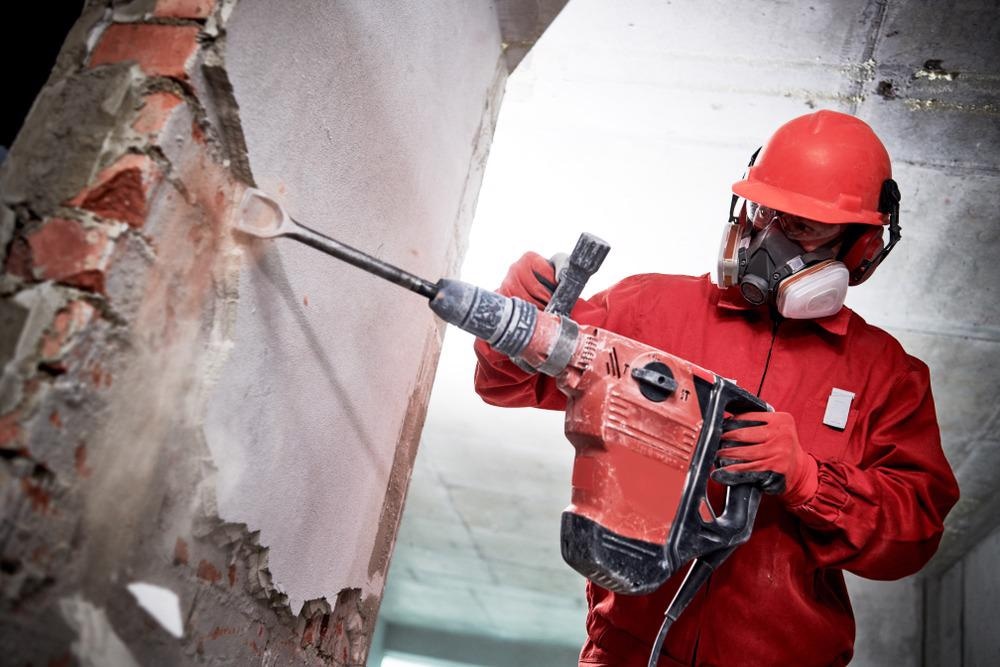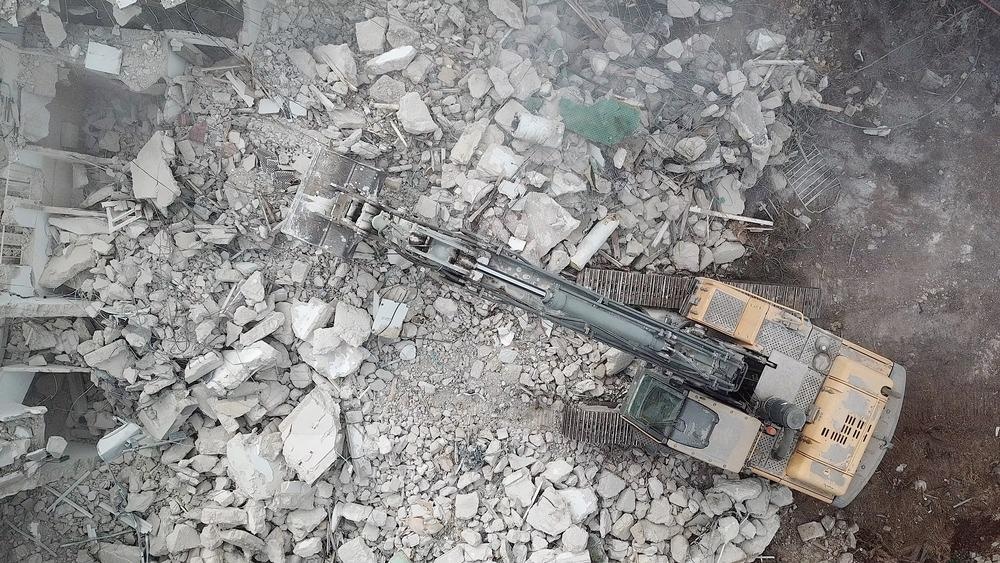The process of demolishing has to be done in a well-planned and safe manner to avoid hazards to the working personnel, the equipment, and machinery that is being used as well damage to the environment.

Image Credit: Dmitry Kalinovsky/Shutterstock.com
Demolishing is the clean, safe and careful removal of an existing building completely or in part to utilize the land for a different purpose. Demolishing works can be done not only on buildings but also towers, sheds, silos, chimney stacks, storage tanks, etc.
Some Common Types Of Demolition
Total demolition is done to an entire structure or site. This is common in the case of community re-structure; an example could be an old retail center that is barely profitable being demolished to build a housing estate to provide more homes for a community.
Selective demolition involves the removal of specific parts of a building. Some buildings can stand the test of time while others cannot. These old buildings may not require a total demolition, as just specific areas of the building may be of concern, and hence selective demolition may be required because it is not the entire building that is a state of concern. Selective demolition can add more value to an already existing building.
Explosive demolition is done with the help of explosives to bring down high-reach building structures. In this type of demolition, charges are set on the structural support of the building to allow the building to collapse by itself once the charges go off.
Safety Considerations During Demolition
The Use of the Correct PP
The use of personal protective equipment (PPE) by everyone on-site is a good way to protect workers. A 5 part PPE includes safety glasses, a hard hat, high visibility vest/jacket, safety gloves, and safety boots. The required standards of personal protective equipment will vary according to the type of demolition or according to the client's requirements. Some specific types of PPE can include welding shields, face masks, fireproof overalls, and Kevlar gloves.
Hiring Qualified And Experienced Personnel
Accidents on site can be prevented by hiring a well-trained and experienced crew to carry out the demolition exercise. Only qualified individuals should be allowed to operate equipment, set explosives, or operate machinery at a demolition site to reduce the risk of accidents as a result of negligence and incompetence.
Environmental Concerns
Environmental concerns such as noise and dust must be closely monitored during a demolition exercise project. Other concerns to be monitored are the vibrations that can be a result of heavy moving machinery or equipment. Dust can be controlled and monitored by temporary water supplies around the site.
The noise and vibrations have to be monitored throughout the whole demolition project and working hours can be adjusted to allow noisy activities not to be done during hours in which it would have a huge impact on the general public. The use of quieter methods can be practiced when demolition such as using pulverizers instead of impact breakers.

Image Credit: MagioreStock/Shutterstock.com
Asbestos Awareness
Be aware of asbestos if any is in the building to be demolished. Refurbishing asbestos and removal of unlicensed and licensed asbestos must be done before any demolishing works are done. Analysts can be hired to take air/fiber samples and all asbestos must be removed in accordance with the compliance standards.
Cleanliness And Tidiness On-Site
A clean site is a safe site. A clean and tidy site is a key factor in delivering a safe demolition project. Good housekeeping should be paramount to promote a safe working environment as well as to ensure that the arising’s from the demolitions site are dealt with appropriately. The crew should have clean and safe running water, a designated area to eat and throw waste, toilets, change rooms, as well as an area where they can seek refuge against extreme weather conditions.
Management Of Traffic
Management of traffic movement should be well established during the planning phase of the demolition project and it should be amended as the works progress accordingly on the site. There is a need to segregate pedestrian pathways and vehicles and this is to strictly adhere to.
A gateman can assist with the control of the inflow and outflow of traffic on the site with appropriate speed limits such as 5mph to avoid collisions on the site. A one-way system can be implemented to minimize the need for drivers to reverse or the need for reversing cameras being installed. Traffic movements, as well as the deliveries in and out of the site, can be timed to avoid rush hour traffic as a result reducing or eliminating the need to queue on the site.
Risk Assessment And Method Statements
Risk assessment and method statements are important elements in the safe planning of a demolition project. A structured approach can be followed to ensure the provision and control of safety from the beginning of the project during and even after the project is complete.
This can be achieved by taking into consideration the pre-construction data and other relevant information that can be supplied by the client. All possible risks that can be related to the demolition project can be listed and the ways in which these hazards can be mitigated and controlled are highlighted carefully.
Further Reading: Mass Timber and its Use in Architectural Planning
Maintaining a stream of communication is imperative during a demolition exercise and feedback is also highly encouraged. Important information such as health and safety should be passed on and decimated to all the workers through streams such as toolbox tools memos, pre-construction information, etc.
Risk assessments and the method statement have to be not only read but also understood by all the workers on-site upon which they can agree and sign documents to indicate they are going to comply with how the risk assessments, method statements, and other associated documentation is to be achieved.
Further Reading and References
Hughes & Salvidge. 2017. 10 Tips for Staying Safe on a Demolition Site - Hughes & Salvidge. [online] Available at: <https://www.hughesandsalvidge.co.uk/news/10-tips-staying-safe-demolition-site/>
W. (2020, December 11). Demolition Methods 101: A Thompsons of Prudhoe Guide. Thompsons of Prudhoe. https://thompsonsofprudhoe.com/news/methods-of-demolition/
Workplace exposure standards for airborne contaminants (2019) | Safe Work Australia. (2011, December 22). Safe Work Australia. https://www.safeworkaustralia.gov.au/doc/workplace-exposure-standards-airborne-contaminants-2019
Disclaimer: The views expressed here are those of the author expressed in their private capacity and do not necessarily represent the views of AZoM.com Limited T/A AZoNetwork the owner and operator of this website. This disclaimer forms part of the Terms and conditions of use of this website.